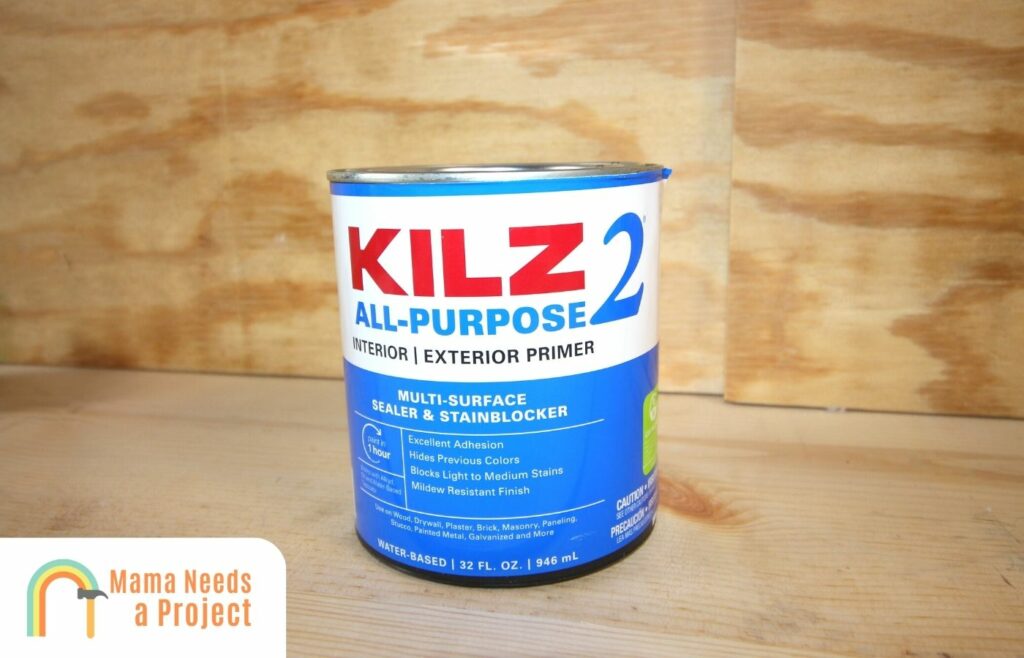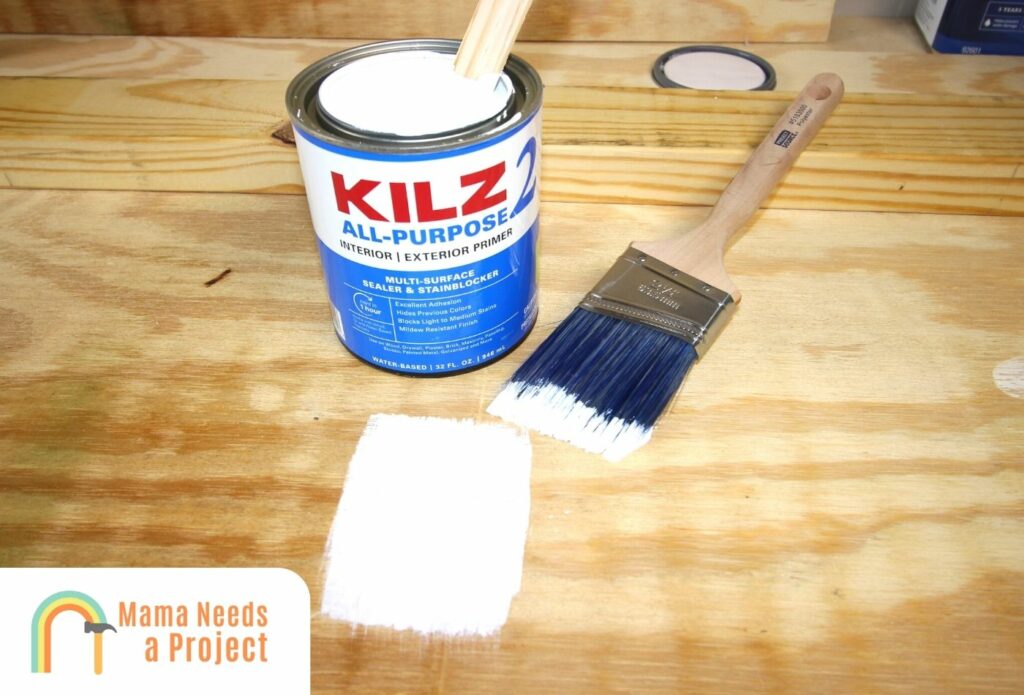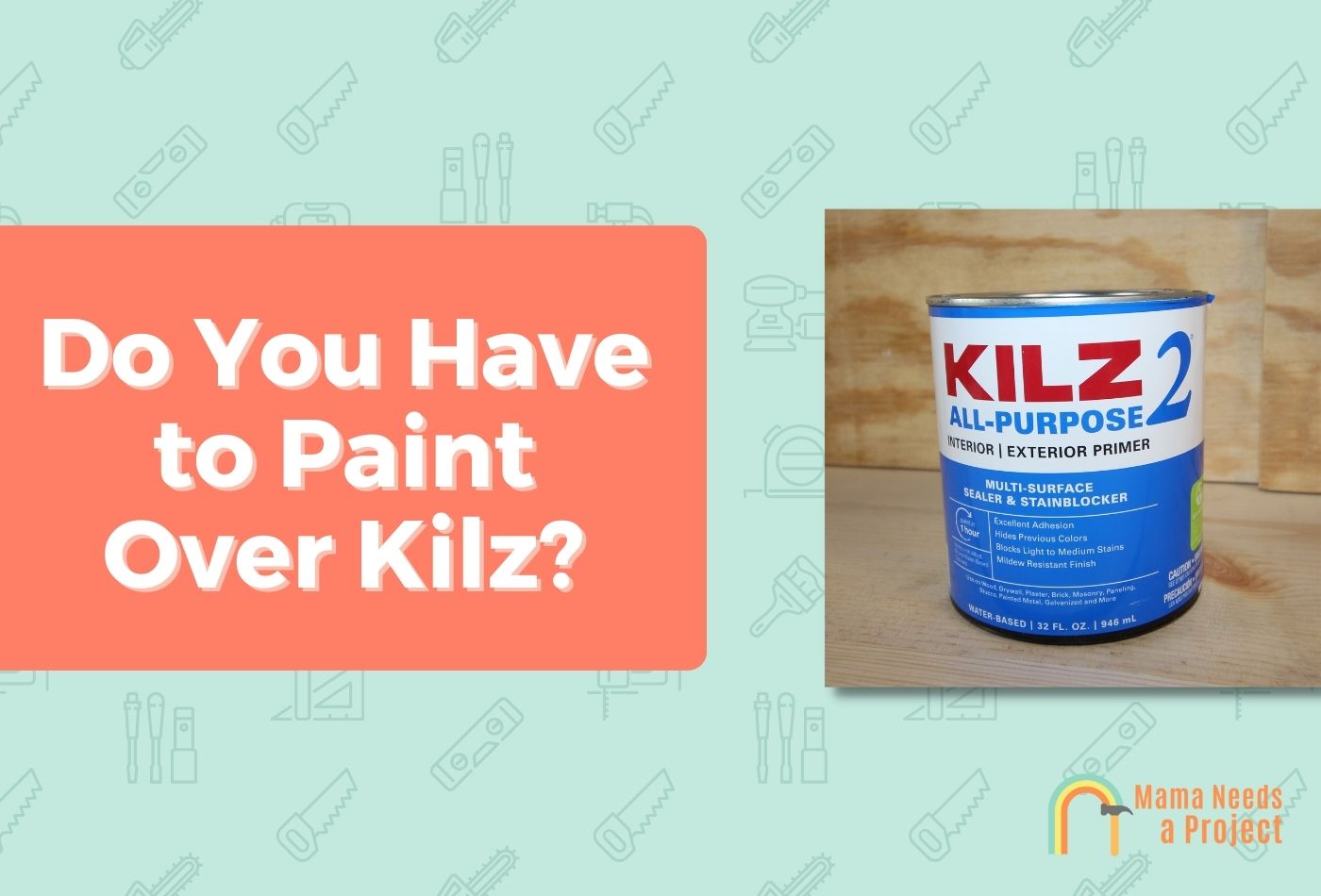Do You Have to Paint over Kilz?
Kilz is one of the most popular paint primers on the market and I can’t tell you how many times I’ve used it for my painting projects over the years.
But you might be wondering “do you have to paint over Kilz?”
After all, if your primer does a great job of covering any existing paint and hiding any blemishes, it might seem unnecessary to paint over it.
In this guide, I’ll explain if it’s required to paint over Kilz, what could happen if you don’t, and much more. Let’s get started!
- Yes, you should always paint over any primer coat to ensure a proper, evenly coated paint job.
- If you don’t paint over primer, the final results of your project probably won’t look too great. Additionally, mold growth can be an issue without covering primer.
Do You Have to Paint Over Kilz?

Nobody can force you to paint over primer, but you always should.
Some of the drawbacks of not painting over Kilz can include:
- Aesthetics: Kilz oil-based primer is not a pretty color on its own. It is typically white or slightly off-white – which might not be the color you’re looking for. You can’t change the base coat of the primer as it comes as-is. If you are looking to paint with a beautiful color then you are going to have to paint over the Kilz. Most projects require some sort of color hue in order to give it the finished look.
- Even Coverage: In addition to the primer not being the color you want, it also helps provide a uniform surface so that your surface looks even. Without painting over primer, you could be left with a bumpy, uneven surface.
- Wear & Tear: Kilz primer is great for a solid base coat, but it was not created to hold up to all of the wear and tear that most latex paint can. If you are looking to keep your project looking amazing for longer then it is essential that you paint over your primer.
- Dirty: Kilz primer is also very difficult to clean on its own. You will not be able to simply wipe away messes like you can with a latex paint. Kilz will grab ahold of dirt and will likely stain the white color – which nobody wants.
- Mold: Looking to use Kilz in a high moisture location? Although Kilz has some protection against moisture it is not as effective as paint. Many paints are designed to withstand moisture and protect its surface.
Kilz was never intended to be a final coat. It was created to give an amazing bottom coat base and is missing essential characteristics to provide a finished product.
Benefits of Painting Over Kilz
Kilz is a fabulous primer when following the recommendations.
Some of the benefits of painting over Kilz include:
- Beautiful Finish: When you buy Kilz you don’t get to choose what color you get – which is one of the main reasons why you’ll need to paint over it. After all, Kilz is just a primer and not a final coat, so depending on your desired color – you’ll have to paint over it.
- Cleanability: Looking for something that will hold up to your cleaning? Then paint is the way to go! Paint is designed so you can easily clean it. Most things can be scrubbed off without ripping off the paint. When you paint over Kilz you don’t have to worry about dirt, grime, or food staining your walls.
- UV Protection: Exterior paint offers UV protection to protect it from the harsh results of the sun. If you are planning a project outside then it is essential that you use exterior paint over your Kilz. Don’t just leave Kilz as the top coat or the sun will rip it apart. Kilz doesn’t have the UV protection required for long-term sustainability.
- Durability: Paint can withstand a decent amount of minor damage. It won’t easily scratch, flake or peel. Kilz was not created to hold up against a rough environment, which is another reason painting is beneficial.
Kilz was never intended to be a top coat. It was always meant to be a base coat which is why it’s so important to paint over it, even if you’re painting white.
How Long Until You Can Paint Over Kilz?
Once you’ve coated your project with primer, you might be eager to start painting right away. But it’s essential that your primer dries before getting started.
The time it takes primer to dry will depend on the type of primer used and how thick it’s applied, as well as some environmental factors like the temperature and humidity.
In most cases, it will take primer a few hours to dry before it’s ready for a coat of paint – but this will depend on the factors above.
What Happens If You Don’t Paint Over Kilz?

Deciding to not paint over Kilz can be catastrophic for your project and could quite possibly ruin it (no thanks!).
By not painting over Kilz, your project might not have the even coat of paint that you’re looking for and it certainly won’t last as long as you want.
By not covering with paint you are quite literally making more DIY projects to fix your DIY project. Why would you want to create more work for yourself?
Can You Apply Kilz Over Paint?
Wondering if you can paint Kilz over paint?
Yes! You can use Kilz as a primer over an existing paint. So for instance, if you have walls that you are trying to prime then you can use Kilz over the paint and then paint again.
To put it simply, primer is used to be an adhesive so that paint can stick to the surface easier. It also gives it another layer of protection from porous surfaces.
That said, primers work best on bare wood surfaces.
So, if you can start from scratch then Kilz will do its job even better. This is mostly applicable in furniture projects where you can sand away grimy surfaces, coats of paint, and layers of finish. If you can get to the bare bones of the furniture and start fresh, Kilz will perform exceptionally well.
So, although it is possible to put Kilz over paint it does work better when there is no existing finish on the project prior to putting a coat of primer.
How to Apply Kilz Primer
Here are the steps you should take when you apply primer:
- Prepare the surface
- Stir your primer
- Protect surrounding surfaces with drapes or drop cloths to keep the area clean
- Use a paintbrush to apply primer
- Apply multiple coats (if necessary)
- Allow to dry
- Inspect coverage and add additional coats of primer as needed.
- Add a top coat of paint for maximum protection
Check out the video below for more help applying primer correctly.
Different Types of Kilz
Kilz is a brand of oil-based primer but they offers several types of products that you can choose from depending on the specifics of your project. Here are the most common types:
- Kilz Original Primer: An oil-based primer suitable for sealing porous surfaces, blocking tough stains, and preventing bleed-through of colors. Best used for interior surfaces and spot-priming exterior surfaces.
- Kilz 2 Primer: A water-based multi-surface primer. It’s a good general-purpose primer that works on both interior and exterior surfaces. Suitable for sealing light to medium stains.
- Drywall Primer: Specifically designed for new drywall, this primer ensures a uniform look and less topcoat paint absorption over fresh drywall.
- Mold & Mildew Primer: Designed to block and resist mold and mildew growth. Ideal for moisture-prone areas like bathrooms and basements.
- Latex Primer: A water-based primer typically used for general interior applications. It’s suitable for porous surfaces and provides a consistent base for latex paints.
- Kilz 3 Premium Primer: A superior quality, fast-drying, water-based primer-sealer-stain blocker. Offers excellent adhesion and mildew resistance. Suitable for both interior and exterior surfaces.
- Adhesion Primer: This is a water-based primer that promotes adhesion on tough-to-paint surfaces, ensuring a uniform finish. Best for surfaces like glossy finishes, PVC, and glass.
- Restoration Primer: An oil or water-based primer designed to block severe stains and odors, making it great for restoring fire or water-damaged surfaces.
What Type of Projects Do You Use Kilz?
Any place where you can use paint, you can use a primer. Kilz primer is perfect for any type of painting project whether it be the exterior of your house, your ceiling, or on a piece of furniture. If you are planning on painting then you should plan on using Kilz as well!
If You Paint with Oil Base Kilz, Do You Have to Use Oil Base Paint Over?
It’s recommended to use an oil-based paint over your oil-based primer to have optimal results. However, it isn’t completely necessary.
You can absolutely paint over your oil-based primer with latex paint and get a solid finish. The important thing to remember is to wait until your oil primer is completely dry before adding any paint.
Are you searching for an exterior wood primer? Check out the best exterior wood primers you can buy!
FAQs
Can Kilz be used as a ceiling paint?
While you can technically use Kilz as a ceiling paint, I wouldn’t recommend it for a few reasons. It’s not nearly as durable with paint over top of it and it’s much more difficult to get a smooth finish when applying primer – which can make your ceiling look “off”.
Can you just use Kilz as paint?
I would never recommend using Kilz as a paint. It’s not meant to be used as a top coating and will collect dust, dirt, and other debris that paints seal out.
Final Thoughts
So, do you have to paint over Kilz?
Yes, you should always apply paint over Kilz (or any primer!).
While you technically don’t have to, you won’t get the best results without it. Primers are designed to cover surfaces and be painted over to get a smooth, durable, and even coverage that looks fantastic.

